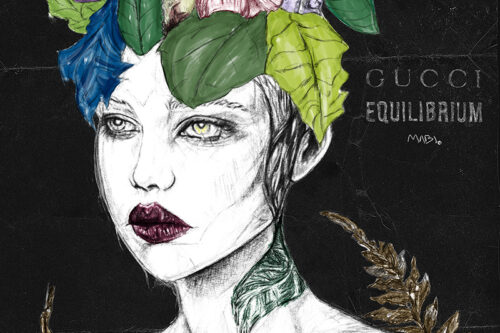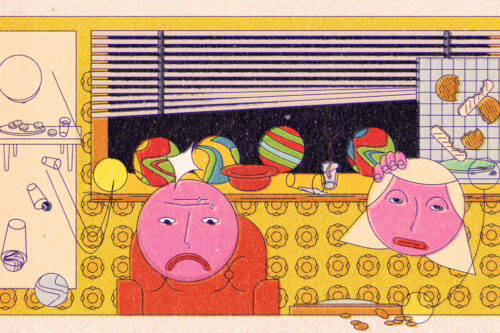Rob Snow is a creative designer working in the fields of graphic design, illustration, web design and teaching. He works and lives in Greece, but was born in England and studied Media and Design at Degree and Masters levels. Rob loves to draw with pencil and converting the resulting images in the computer. He has been a freelance designer for 25 years and worked for small and large organisations alike. He also combines his practice of art as a University lecturer, where he teaches Creative/Lateral Thinking.
Portfolio: Behance
1. Welcome to my “home” of creativity. Please, tell us about yourself. When did you first start as a designer?
What can be said about Rob Snow, that doesn’t have someone instantly think of Game of Thrones! Well, born and raised in the UK. Was drawing from the age of six, and later, after seeing Star Wars at the age of thirteen decided it’s a career option, better than working in an office. Went to college, got my degree and masters and I am now, after a short excursion, set up in Greece trying to make a living at something I really love. I have evolved my skills over the years. With a degree in media production, and an emphasis in animation, I worked for a while in the industry, but slowly realised that I like drawing more than repetitive drawing, so turned to illustration and graphic design. Now, I use my artistic skills in two ways. The traditional use of pencil combined with that of digital skills, that help speed up the process and gives output usable in mass production, but with quality. I think to answer the second part I have been designing since I was around 13 years old.
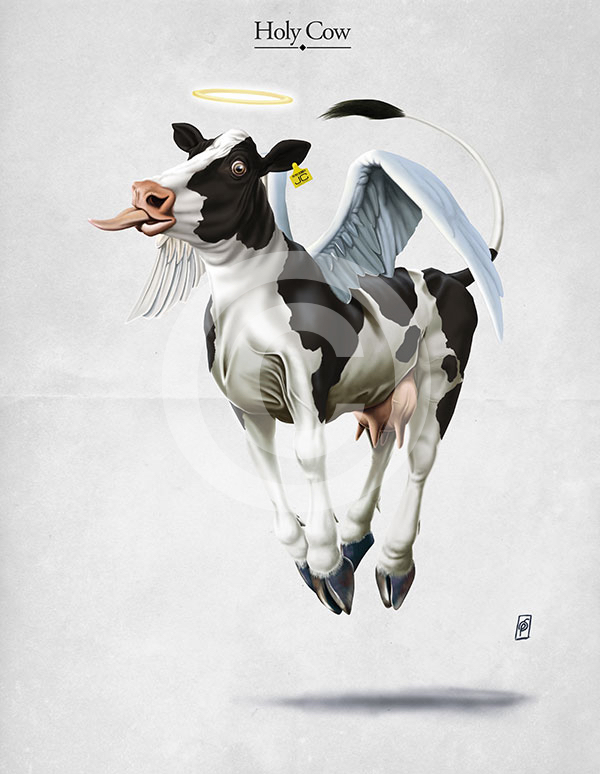
2. Your portraits are truly amazing and your love for animals speaks volumes! How do animals influence your work and what do you wish to express through your design?
Well, over the years scientific evidence has proven more and more that animal are sentient as humans. In fact I believe that humans are also animals. I am a great Darwinist believer, and so have found a great connection to the animal world. If I were honest, I think I’d prefer to be surround by animals than humans. So, I paint them, and have them on my wall. With the animal images I want to show that there is a connection between our so-called civility and animal behaviour. Freud and his kind have over the years seen the similarities between animal behaviour and humans. So, it needed to be visualised. Maybe I want to show that animals are more beautiful than humans (which they are), even when doing human things.
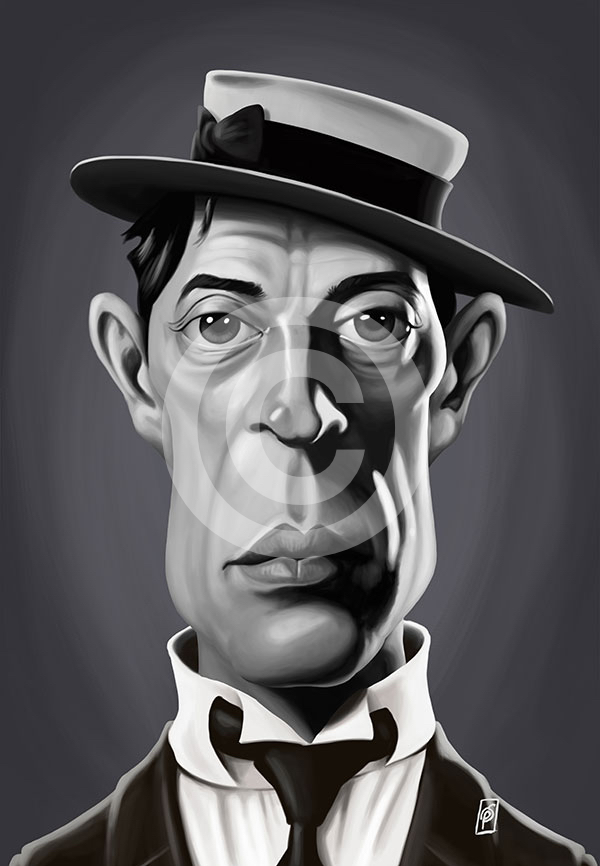
3. Do you believe artists can influence and bring change through their art?
In my research for my teachings, I have discovered that mankind could draw before he could speak or write. It is the first ever form of communication. It is inherent in all of us, as we all have the same ancestral line. The problem is that modern life has demoted it to a luxury item or object of desire, rather than a medium carrying a message (to paraphrase McLuhan). There are many cases where the power if an image has made a statement to the viewer. In modern life though the message is being diluted by the power of money. Powerful messages are being washed away with price tags and social standing. Van Gogh’s paintings had strong social record, but at the time they were ignored. And today, apart from the price tag, only give insight into the lives of the working class in his period.
4. What’s some interesting feedback you’ve received? Did it make you see your own work from another angle?
Feedback is essential, and I am grateful for the lecturers at my foundation course who taught me to take all types of criticism. I call it my ‘rhino’ skin. I can’t remember any that stand out too well, but I take them all in. See if there is value and cause to the comment and act accordingly. A lot of people love my animal art, but few buy. Is that a comment? It never influences my willingness to carry on with a train of thought with my art. Artists should speak as they want, not guided by the voices of others. It’s one of the true free forms of expression left on the planet.
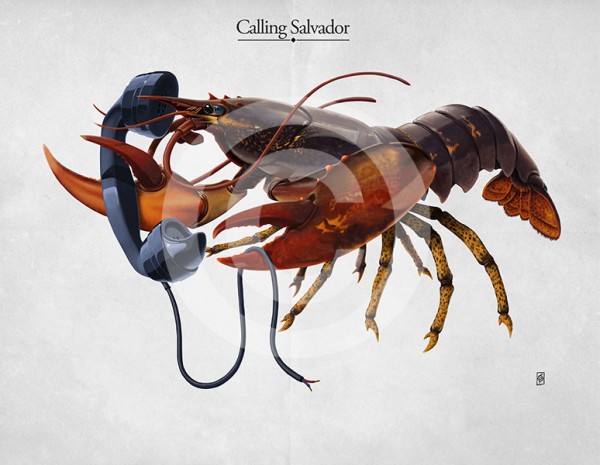
5. Where would you like your work to lead you? Do you have any aspirations or plans for the future?
I have an earring in my left ear; a yin-yang symbol. I think and believe there is a balance and destiny in all things. My art gets me up every morning and gives me that passion to get through the day, without a struggle to think it’s a chore, that nobody accepts it, or that the life isn’t as glamorous as it seems. It is the drug that simply washes away all the crap that society gives you, and gives you such a buzz, that I get lost. One reason I can work through illness, depression, and dark days; because I have this fix!
6. Do you ever have creative slumps? What do you do then?
I guess I kind of answered that above. I think the most of a creative slump I have is a slight block in thinking on an idea. But as I discovered that Einstein had a trick of lying down when he needed to think great things. Can’t argue with Einstein! I also tell my students when I see they have great problems in brainstorming; ideas are like invisible butterflies floating around us, everywhere. What we only need to do is be bothered to grasp one in our hands and enjoy its wonder.

7. If you could hand one of your portrait posters to any one in person, who would it be?
I’m not a big fan of the aura of celebrity. We are all human beings. All have a heart, brain, two legs, two arms, etc. So it would not really be a thrill to hand something over on that basis. However, I have enjoyed many of my caricature creations, and apart from some of the obvious ladies who I would like to meet (Monica, Rosario & Archie) then I guess I would like to see Michael Stipe’s reaction, as many have said over the years I have a striking similarity.
8. In what form of art would you put your work to and why?
I am sure that many consider me an illustrator. So, I am happy to sit in that sector. I class myself as a creative. Putting brackets on this is very restrictive. My ideas find the best light to the world, based on my ability to birth them into that view. It seems in todays world minimalism and weirdness (pop surreal) are the order of the day, so another reason I am labelled illustrator, as it sometimes defines the accuracy of the technique.

9. One of your posters is about “copyright”. Please share more about it and your experience in copyright violation.
This interview would be incredibly long if I went into all the stories and reasonings behind people’s mentality toward copyright. Copyright was invented in 1709, by the Charter of Anne. It really hasn’t changed much in that many years apart from a brief digital inclusion called the DMCA in 1989. This only helped big online companies avoid prosecution for allowing UGC to violate copyright laws. To the small time artist, life is a headache under copyright. In the EU we have an automatic accreditation to the ownership of works. We don’t even need to place the © anymore. All we need to do is prove we created it. One big issue from all this is if some thief (I wont be polite about their terminology) steals a piece in say India, online, and the small time artist finds out.
They have to hire an lawyer in India to sue the thief! Which most of the time can’t be done, because of expense. This is the biggest change that needs to happen in the law. The violator needs to defend themselves in the country of the violated. Else what is the purpose of copyright; “peace of mind”. This is one reason that people do it. They know small time artists can’t afford to do this, so wtf! The internet is not helping the issue, especially due to the DMCA. Many companies offer DMCA takedown forms, but that is all it is. They take it off the web. Doesn’t stop people like a cease and desist does. So they find another avenue. Also, the data protection act gives these scum anonymity. You find some thief called ‘artThief682’ on eBay selling your art on a iPhone case. You don’t know where he is, who he is, and the company wont tell you anything due to the data protection act. So, they get a slapped wrist. Two days later they make a new shop and upload the work again! The copyright law as it stands is a simple opportunist way to slap art in the face. My experiences are well documented, and one reason I worked on getting Artistic License up and running. DMCA take downs, research and action took days of my time. Now I have created a load of useful tools for artists to get it done in minutes. All from experience. A great photographer at Picture Defense explained that many sites are located in the EU and US, and as they comply to DMCA takedowns this is the easiest way. A funny point is I made it open to allow everyone to take, use and distribute the ‘Mao Tse-Took My Art’ image and today nobody is selling it, stealing it, or using it! Funny that.
10. In your opinion, can education teach people to respect other’s work and in long term stop them from copying or re-selling?
Simply put, no! It’s a nice premise to think and believe that we are all morally correct. Even if some of us worship Gods that advocate nicety to others, the real factor and law of the world today is MONEY! If some lazy, morally corrupt asshole sees an opportunity to take someone’s work off the internet and sell it to make their life better, they will. Doesn’t matter if you tell them about copyright, doesn’t matter if you see them going to church on Sunday. If the issue is needing money, or making more money quicker at someone else’s expense. Then there are a load of corrupt people out there who will not even blink at the thought. This will never change. The only thing that will stop them is a direct attack on their well-being. Like if the internet laws states that if an artist could prove that the item was stolen, then the personal data could be release of the thief and they will be tried in the country of the artist.
If they don’t attend then it’s the responsibility of the court, government of their country to get compensation to the artist. It’s sad really. This is the reason that assholes shoot elephants! This is why we have wars, why we have corruption, etc, etc. Morality is only effective in the vicinity of some people’s person zone. Outside that, everything is game. I suppose the happy side is it doesn’t stop that drug of creating, for me.
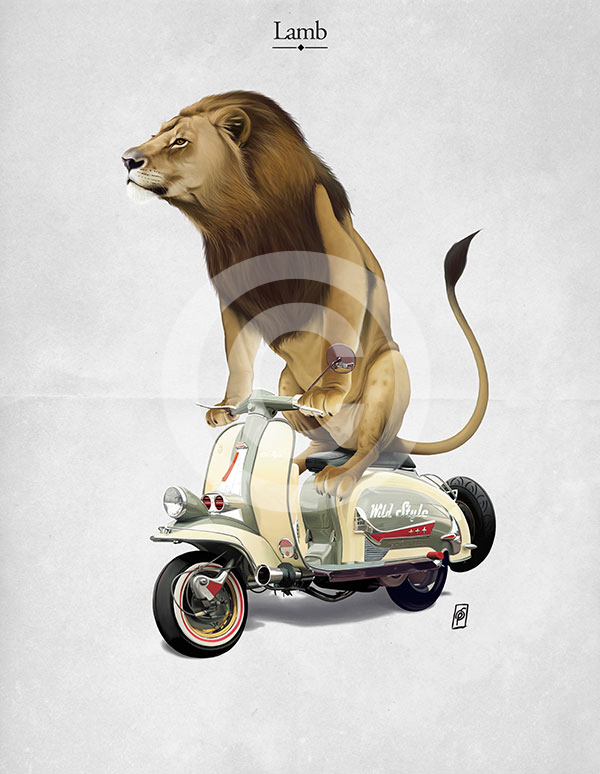
11. Tell us your top 5 lessons that a new artist should learn and follow to become a successful designer.
Hum! This could be harsh. But I have understood from some of the greats that certain things are important.
1) Understand how to use a freaking pencil. If you can’t draw, don’t call yourself an artist. Style is something that evolves from the skill, not an excuse for lack of ability in traditional skills.
2) Ideas are 100% more important that the medium used. Art (whatever form) has to communicate.
3) Learn to take criticism! If you want 3,00 like on Facebook from your friends, great! Be happy and put your art on the fridge. If you want to get better, listen to the constructive criticism of professionals and do something about what they say. Everyone listens to 10 comments and are always hurt by the one that is negative. What you need to learn to do is grow with it, adapt and become better/stronger. I love that expression; “If it doesn’t kill you, it makes you stronger.”
4) Understand the history of art. They are not just images and faces.
Their lives made them into the artists they were, and you enjoy. So knowing that will make you see art as a passion, not a money game.
5) Don’t copy others. You will be recognised in a crowd when all are blue and your wear red! Austin Kleon wrote an interesting book “Steal Like an Artist” and so did Paul Arden, with “Whatever you think, think the opposite.” Both can be read in an afternoon. Digest them and the best approach to any form of communication, is to UNDERSTAND it!



